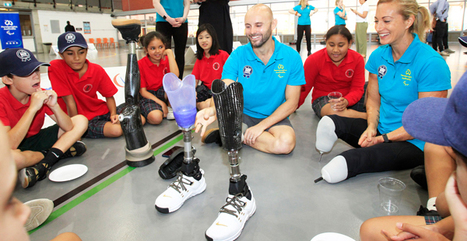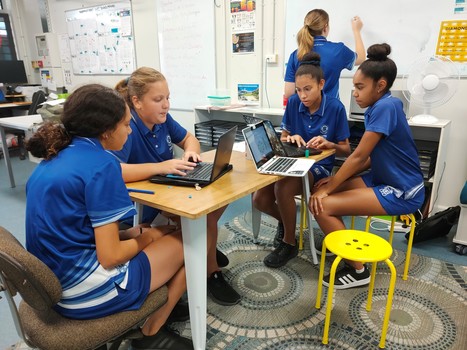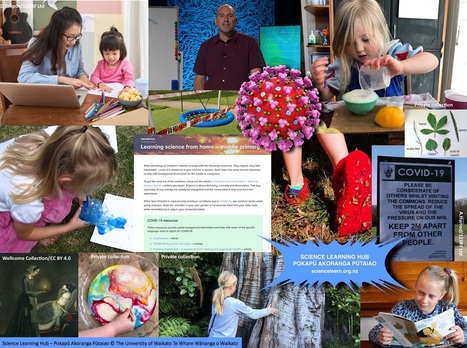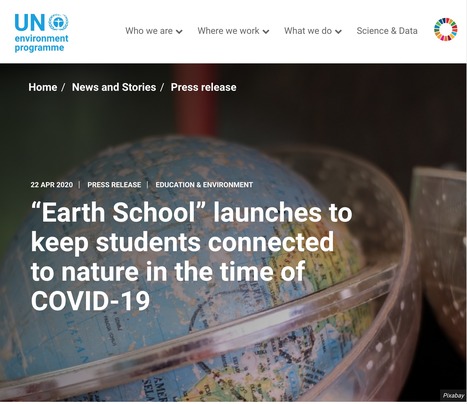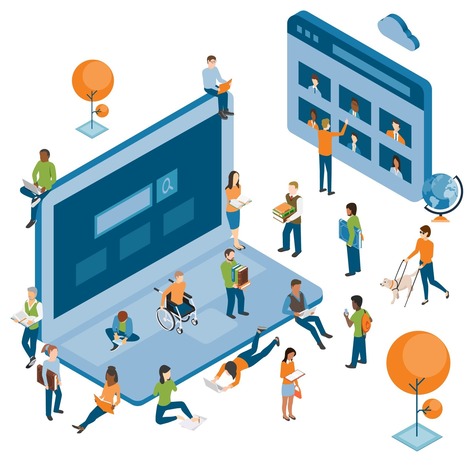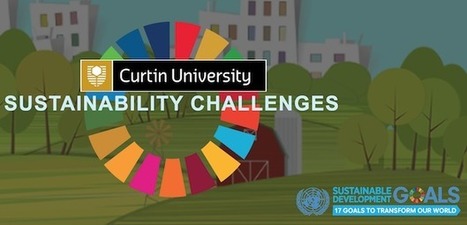Get Started for FREE
Sign up with Facebook Sign up with X
I don't have a Facebook or a X account


 Your new post is loading... Your new post is loading...
Current selected tags: 'collaborative', 'cross-disciplinary'. Clear
Kim Flintoff's insight:
"Bebras Mini Challenges Bebras Mini Challenges are shorter versions of the Bebras Challenge with a focus on a particular Computational Thinking skill. Bebras Mini Challenges, like Bebras 365, are available as a free, easy-access resource throughout the year. Bebras Mini Challenges and do not require a student or teacher login to access and students will receive a grade upon completion of the questions. These challenges are shorter than Bebras 365 with a focus on one particular Computational Thinking skill. Bebras Mini Challenges have been divided into three categories: primary school students, middle school students and senior secondary students.The primary category is recommended for students in years 3-5, middle school for students in years 6-8, and senior secondary for students in year 9 and above. These age groupings are a suggestion only, and we encourage students to challenge themselves by attempting different question sets."
FACULTY OF HUMANITIES Flexible Learning Getting started with Flexible Learning and Blackboard
Kim Flintoff's insight:
This was put together back in 2012 - assuming it was totally redundant by now, it was left to languish in a repository at Slideshare... but it might hold some interest:
Despite the mention of humanities it reflects a wholistic approach to planning, creating, delivering and assessing in a flexible manner in any discipline. It reflects its original context but carries all the thinking behind flexible learning engagement in broad terms.
Advances UN Sustainable Development Goals via an innovative high schools program using business management principles
Kim Flintoff's insight:
The Plan for the Planet is a well-established program that enables students to engage in a cross-disciplinary learning journey that is focussed on the UN Sustainable Development Goals.
|
Slip some science into everyday activities you can do while at home. The Hub has resources for helping early childhood, lower primary and middle primary students and families. This article outlines simple ways to engage learners and enhance their learning. - early childhood - lower primary - middle primary - secondary
Kim Flintoff's insight:
Slip some science into everyday activities you can do while at home. The Hub has resources for helping early childhood, lower primary and middle primary students and families. This article outlines simple ways to engage learners and enhance their learning. Check out our articles with ideas for hands-on, active and outdoor learning from home for: - early childhood - lower primary - middle primary These articles include a mixture of hands-on and online at home learning for: - upper primary - secondary
In response to the COVID-19 crisis, an unprecedented coalition has come together to launch “Earth School,” which provides free, high-quality educational content to help students, parents and teachers around the world who are currently at home. Initiated by the United Nations Environment Programme (UNEP) and TED-Ed, Earth School takes students on a 30-day “Adventure” through the natural world.
Kim Flintoff's insight:
In response to the COVID-19 crisis, an unprecedented coalition has come together to launch “Earth School,” which provides free, high-quality educational content to help students, parents and teachers around the world who are currently at home. Initiated by the United Nations Environment Programme (UNEP) and TED-Ed, Earth School takes students on a 30-day “Adventure” through the natural world.
A coalition of education organizations has curated strategies, tips and best practices for teaching online during the coronavirus pandemic. Via Tom D'Amico (@TDOttawa)
Kim Flintoff's insight:
This collection of resources is curated by a coalition of some of the most powerful organizations in US education - teachers,parents and learners are able to search and filter the resources to address their needs.
You can enrol as many students from your school as you wish. All students will need to pair up with a classmate or someone they know at school or in their community, so they can work side-by-side. Each pair will then meet and join up with a pair of students from anywhere else in the world. Ideally all teams should have 4 students. Teams can have as many advisors and helpers as they wish, but only four students will be the officially recognised team.
Kim Flintoff's insight:
You can enrol as many students from your school as you wish. All students will need to pair up with a classmate or someone they know at school or in their community, so they can work side-by-side. Each pair will then meet and join up with a pair of students from anywhere else in the world. Ideally all teams should have 4 students. Teams can have as many advisors and helpers as they wish, but only four students will be the officially recognised team.

Kim Flintoff's curator insight,
March 27, 2020 1:43 AM
You can enrol as many students from your school as you wish. All students will need to pair up with a classmate or someone they know at school or in their community, so they can work side-by-side. Each pair will then meet and join up with a pair of students from anywhere else in the world. Ideally all teams should have 4 students. Teams can have as many advisors and helpers as they wish, but only four students will be the officially recognised team.
|


